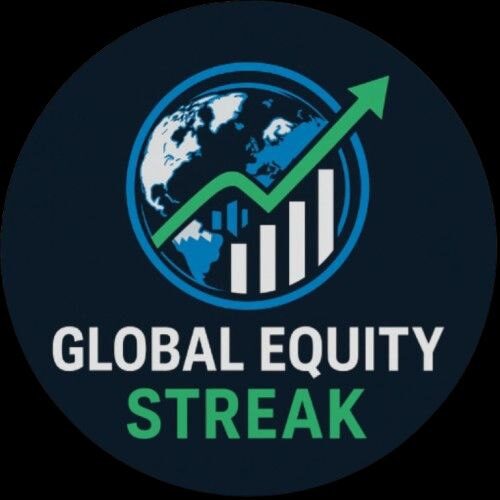President Trump unleashes a historic wave of tariffs, including a 50% duty on Indian exports over Russian oil purchases, and threatens 100% tariffs on imported semiconductors not built in the U.S. Major tech giants like Apple and TSMC announce massive investments to avoid penalties. A new 40% transshipment levy targets China’s backdoor exports via Vietnam. With monthly tariff revenue nearing $50 billion, Trump’s strategy aims to reshape global trade, bring $2 trillion in manufacturing investment to America, and solidify U.S. dominance in AI and chip production.
Trump’s Tariff Tsunami
In what is being hailed as the most significant shift in global trade policy in nearly a century, President Donald Trump has triggered sweeping new tariff measures targeting countries like India, China, and Vietnam. The latest round of actions marks a monumental change aimed at reshaping supply chains, bringing manufacturing back to America, and punishing nations for geopolitical alignments—especially those involving Russia.
50% Tariff on Indian Exports for Buying Russian Oil
President Trump announced a 50% tariff on all exports from India to the United States, effective August 27, 2025. The move comes in retaliation to India’s continued purchase of oil from Russia, despite the ongoing Ukraine conflict. Trump slammed India for “ignoring” the Ukraine war and warned that nations aligned with Russia must “pay a price.”

The White House is also reportedly reviewing similar penalties on other countries still buying Russian oil. This dramatic tariff escalation is expected to directly hit Indian goods entering the U.S. and create major friction in U.S.-India trade relations.
Tariffs as Tools for Negotiation, Not Just Punishment
White House officials noted that tariffs are not merely punitive—they are tools to bring countries to the negotiating table. Trump believes in using every available economic instrument to make the U.S. stronger, and these tariffs are part of that strategy. Aides confirmed that “everything is on the table,” including further actions against China if it continues buying oil from Russia.
90-Day Pause on China Tariffs Set to Expire August 12
The current 90-day pause on tariffs with China is scheduled to expire on August 12. President Trump has signaled that he may extend the truce if progress continues on trade talks. He also expressed a willingness to meet President Xi Jinping this year, should a potential deal be finalized. Negotiators say an extension looks “likely,” but no formal decision has yet been made.
China Using Third Countries to Bypass Tariffs
One of the key concerns raised is China’s strategy of using countries like Malaysia, Singapore, and Vietnam to export products illegally into the U.S., especially semiconductors. Trump’s team is cracking down on these workarounds. If a product originates in China but is rerouted through another country like Vietnam, it will now attract a 40% transshipment levy—a 20% tariff for the transit country and 20% for the country of origin.
Focus on Semiconductor Independence: A 100% Tariff if Not Built in America
Currently, over 90% of advanced semiconductors—especially those used in military applications—are manufactured in Taiwan. Trump is determined to change that. His new policy is clear:
- Companies must build chip manufacturing plants in the U.S. if they want to avoid a 100% import tariff.
- However, if a company commits to building a U.S. supply chain during Trump’s term, they will be allowed to import chips temporarily tariff-free until the plant is completed.
- Companies must register with the Examiners Department and show proof of U.S.-based operations to qualify for this waiver.
Apple, Meta, Nvidia, and TSMC Asked to Build in America
Trump personally called on companies like Apple, Meta, Nvidia, and TSMC to invest in America. Apple has already responded, announcing a $100 billion investment in domestic production. In turn, Trump stated that such companies will be spared major tariffs due to their commitments.
Other tech and semiconductor firms are following suit:
- TSMC has committed over $200 billion investment in Arizona.
- Micron is investing another $200 billion in Idaho and New York.
AI Spending Surpasses Consumer GDP Contribution
In a staggering economic shift, U.S. capital expenditure on Artificial Intelligence has surpassed consumer spending in GDP contribution. The Trump administration sees this as a once-in-a-generation opportunity to reshape the economy around AI, chips, and clean tech—fueling unprecedented private investment.
$2 Trillion Investment Wave Triggered by Tariffs
According to administration estimates, Trump’s tariffs and investment incentives have already sparked up to $2 trillion in private sector commitments, especially in semiconductor manufacturing and AI infrastructure. The message is simple: build in America and you won’t pay tariffs.
Tariff Revenue Hits $30 Billion a Month, Targeting $1 Trillion Total
The most overlooked but critical impact of this tariff policy is revenue.
- Last month alone, the U.S. collected $30 billion in tariffs.
- With the new measures kicking in, officials now expect this to surge to $50 billion per month.
- Long-term projections suggest tariff revenue could eventually hit $1 trillion, a record-breaking sum in U.S. fiscal history.
Trump’s administration emphasized that no major country has retaliated, since every nation still wants access to the powerful U.S. consumer market.
Closing Loopholes: New Tariff Rules for Transshipment via Vietnam
Trump’s administration is also fixing loopholes used by countries like China to avoid U.S. tariffs. For example, goods made in China but rerouted through Vietnam will be hit with a combined 40% tariff. This includes a 20% tax on the Vietnamese leg and another 20% for Chinese content. Officials say this will raise hundreds of billions more in tariff revenue and make it impossible for countries to escape penalties via third-party routes.
Conclusion: Tariffs as Strategy, Not Just Sanctions
Donald Trump’s strategy is not just about economic punishment—it’s about restoring American manufacturing, building secure supply chains, and asserting U.S. economic dominance. With billions in revenue pouring in, trillions in tech investments, and a global market reshuffling, Trump’s tariff tsunami is rewriting the rules of the global economy.

